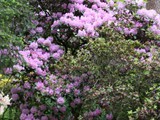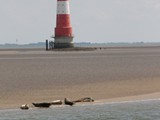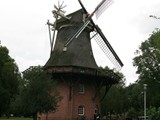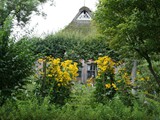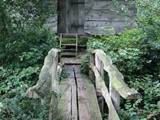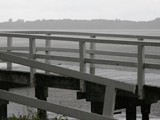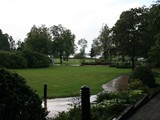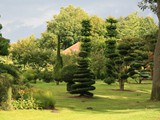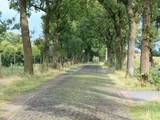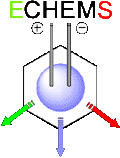Surrounding
Bad Zwischenahn is a registered recreation location (title 'Bad') and home to several large scale medical recovery facilities and a prime tourist destination. It is in the center of a region called Ammerland - The Garden Landscape. Professional gardening companies (tree nurseries specialized on translating outgrown trees for urban development projects) and food processing industry (starting from hand-craft smoked fish and meat to mass production of Bratwurst) shape the economy.
The wider surrounding hosts maritime economy, large scale logistic centres, car and aircraft industry with the VW in Emden, Mercedes in Bremen, and Airbus in Bremen and Varel and their supply chain in the region, energy economy with a strong emphasis on renewable energies (electricity mix between rivers Weser and Ems 0.6 % crude oil, 7.6 % coal, 25 % natural gas, 13.3 % nucelar, 32.5 % wind,. 4.8 % biomass, 16.3 % photovoltaics, water 0.02 %).
Be prepared to discover some low German (Plattdeutsch) phrases in everyday live. This language was spoken in several variations in the east of the Netherlands and all over Northern Germany. It is closer related to English than the contemporary high German. Today, everybody understands German as you may have learnt it in school. But there are a few special things. People greet each other with 'Moin Moin' which is 'Good Day' or 'Guten Tag'. The Bad Zwischenahner Meer is a sweat water lake because the low German word 'Meer' means lake and 'See' in high German, while the high German 'Meer' stands for a salt-water sea. If this is getting confusing for you, do not worry and take a swim or enjoy a boat cruise. The tourist attractions in the immediate vicinity include yearly flower shows, in particular during the Rhododendron flower.
Recommendations
If you arrive earlier or leave later half day: rent a bike and cycle around Zwischenahner Meer, enjoy a smoked eal. [map] Take a car and have an Ostfrisian tea ceremony , i.e. dark black tea with Kluntjes (=large monolithic sugar crystals) and clouds (drops of milk distributed in the cup by thermal convection) all in special pottery in one of the picturesque North Sea harbours, e.g. Greetsiel. On the way watch out left and right to discover the typical signatures of settlements under the constant threat of deadly flooding and the creativity and endurance of people making a living between sea and land.
Attractions on the way
Artist village Worpswede, east of Bremen [more]
German emigrants museum in Bremerhaven. While today Germany is the target of many immigrants, it was and continues
to be the source of emigrants to different destinations and for very different reasons. At the place where they entered
the ships, a price-winning modern museum traces the lines of German emigration over centuries. [more]
Shipyard Meyerwerft: Deep inland, modern cruisers for many thousand passengers are assembled. It is always a spectacle
as well as a technical and logistic miracle if a completed ship is moved to the open sea via the small river Ems. There
is an impressive tour inside the ship yard. [more]
Kunsthalle Emden: Changing exhibitions of modern art [more]
Oldenburg:
Museums in the old castle: History of the Duchy of Oldenburg which was an independent political entity till
the end of World War II. After WWII it became part of the contemporary State of Lower Saxony. [more]
Galleries of old and modern art [more]
Horst Janssen Museum: Changing exhibitions devoted to Horst Janssen, a leading postwar realistic German artist who lived in Oldenburg. [more]
Museum Humans, Nature and Technology: Natural history, archaeology including famous mummified bodies (Moorleichen)
from prehistoric sacrificial practise recovered from the surrounding swamps during peat mining. [more]
Bremen:
City center with UNESCO world heritage status for the town hall of the powerful medieval Hanse city
(Hanse was a trade organisation controlling salt and hering trade in the North Sea and Baltic Sea rivalling the power
of aristocratic states in the region. Seeding point of civil governance.) [more]
Science Museum [more]
Chocolate Museum
Übersee Museum: (Oversea Museum, near railway station). Remodelled exhibition critically reflecting about Bremen's
connections to overseas in the colonial times. Many wonderful ethnographic items. Still today Bremen is home to coffee, tea and chocolate processing. [more]
National Park:
German Wadden Sea: (UNESCO world heritage status) A trip to the islands requires a full day and brings you to long and
wide beaches on the outer side of the islands. The mainland coast is a tidal flat with mud and related activities. Swimming is only possible at special places. [more]
